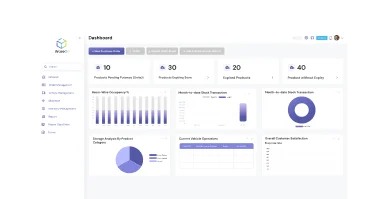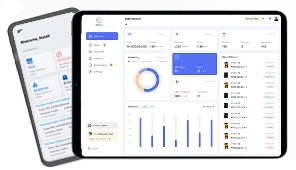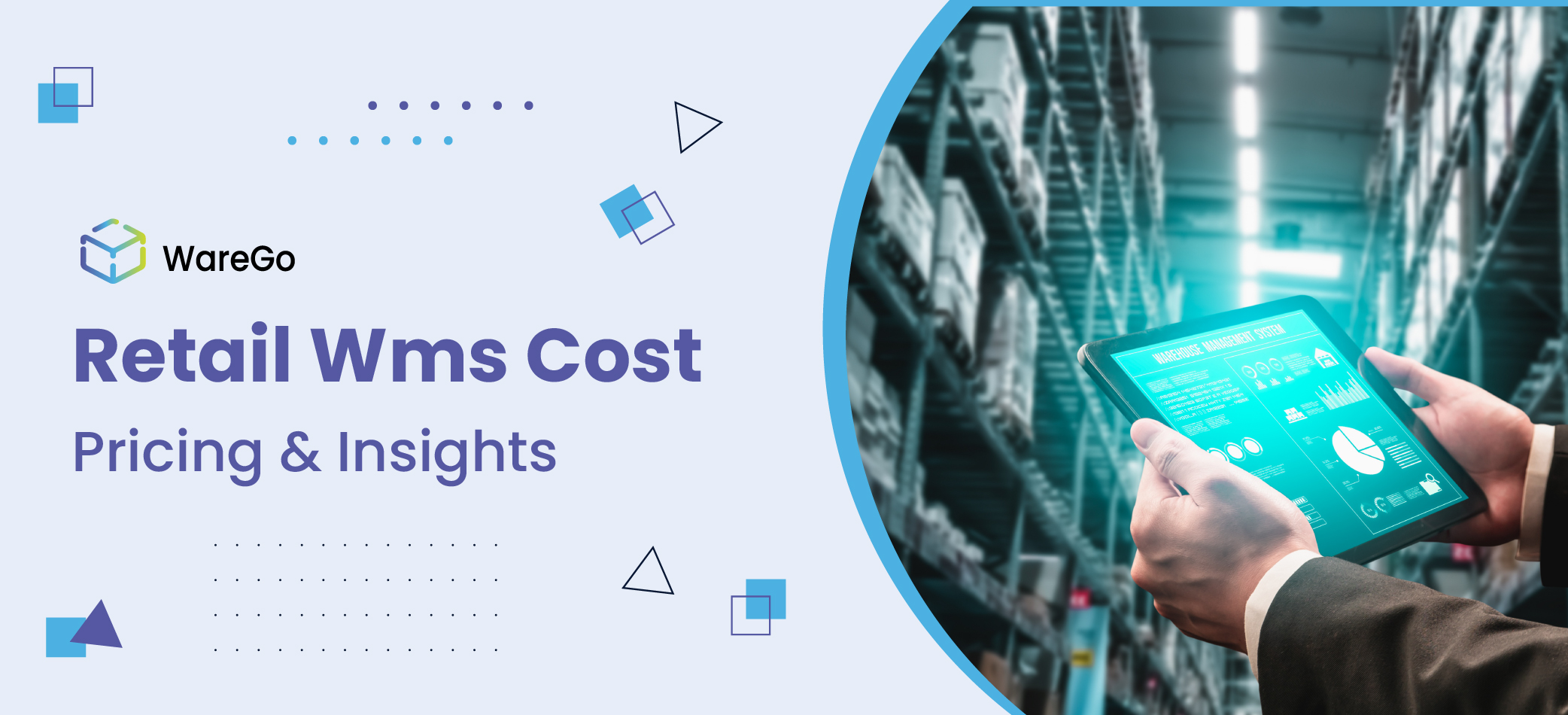
Is a retail wms affordable for small retailers? What factors can influence their price? And most necessarily, how can you choose the right model for your business? Don’t worry, WareGo will explain to you everything in detail.
Understanding the cost of retail warehouse management system has now become an essential part, as rising customer demands, omnichannel locations, and supply chain disruptions necessitate it.
Additionally, the retail WMS market is projected to be valued at USD 2.8 billion by 2025, registering at a compound annual growth rate of 12.7%.
In this blog, we will delve into retail warehouse management costs, providing a closer look at pricing, models, and how to choose the best option for your business as a retailer. Our guide is here to assist you in planning everything.
Sign up for the best plan for your retail management solutions at a cost-effective rate with WareGo.
Book a Free Demo Now!Table of Contents
Retail WMS Cost: A Step-by-Step Guidance for Retailers
Running a retail operation, whether online or brick-and-mortar, is an investment that is no longer optional. As a retailer, you must consider the fundamental aspects of your business.
As for today’s market, a retail logistics software can cost anywhere from $250 to $ 6,000 per month.
From order fulfilment to inventory visibility, everything requires a wms that can help your backend operations while maintaining customer satisfaction.
What will it cost? Can the business afford it?
Let’s break down the cost of retail warehouse software with a detailed overview of the cost of each component.
However, before that, first examine the basic estimated price range for different business sizes.
| Business Size | Estimated Price Range (Per Month) |
| Small-sized | $250 to $1000 |
| Mid-sized | $1000 to $6000 |
| Large-size | $6000 to $10000+ |
Detailed Reasoning of the Cost of Retail WMS
| Category of the Cost | Cloud-based Retail WMS (Estimated) | On-premise Retail WMS (Estimated) |
| Licensing retail WMS cost | $100 – $500 per month. (SaaS Subscription) | $2000 – $200,000 per month. (one-time license) |
| Retail implementation & onboarding costs | $1000 – $10,000 | $3,500 to $40,000 |
| Hardware cost | $1000 – $20,000 (Barcode, tablets, printers) | $10,000 – $50,000+ (Networking servers) |
| Support & maintenance charges cost. | $1000 – $10,000 | $5000 – $50,000+ |
Use our calculator to accurately measure your retail cost and monthly expenses for free, providing better validation.
Estimate Your Retail WMS Cost Now!Key Factors Affecting Retail Warehouse Software Cost
After determining the basic cost, let’s discuss the factors that influence various expenses, encompassing both upfront and ongoing expenses.
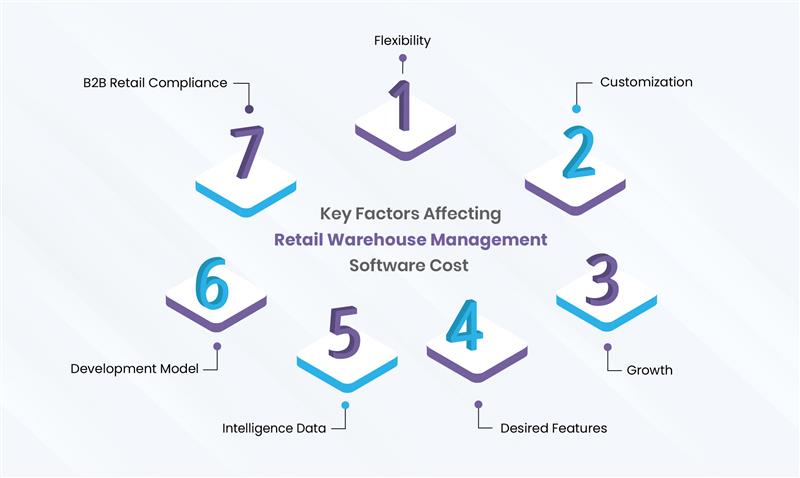
Retailers need to understand the key factors in effective budgeting to determine the optimal cost of retail wms.
Let’s identify the key factors to make an informed decision.
| Key Factors | What is It? | ROI Role | Risk Elements |
| Flexibility | Adjusting or adapting to new, changing needs (such as products or inventory strategies). | Helps with future investments & the frequency of updates. | It rejects workflow. |
| Customization | Giving customization options for WMS layouts and handling workflows. | Enhances efficiency & becomes an operational fit. | Reduces productivity. |
| Growth | Long-term growth in business, without performance loss and handling seasonal spikes for betterment. | Enables expansion growth & minimizes the additional cost. | System overload chances. |
| Desired Features | Features like WMS, inventory tracking, and warehouse layouts. | Boost operational efficiency with value. | High in cost for one-time use. |
| Intelligence Data | Maintains data & enables informed decision-making reports. | Facilitates analytic forecasting with improvement. | Poor decision-making leads to unintentional loss. |
| Development Model | Models like cloud WMS vs on-premises vary with their cost & work control. | Aligns investments with security needs under budget. | Misalignment causes overspending. |
| B2B Retail Compliance | Handles customer or vendor-specific shipping and return requirements. | Builts up B2B relationships and helps prevent chargebacks. | Penalties or fines for missed compliance. |
What You See VS What You Pay: Hidden Cost of Retail WMS
Retailers only see what has been shown to them, and they primarily focus on upfront prices when evaluating a WMS system.
However, in some cases, the cost of a retail system is far higher than its estimated cost.
The initial cost estimates for a retail warehouse system (WMS) often underestimate the total expense by 30-50% due to factors like customization needs, required training, system integrations, and IT infrastructure upgrades.
You must be thinking HOW?
This situation arises because hidden costs come into play. From system complexity to training and integration, all of these may create hidden costs you are not aware of.
Quick Summary Table for Hidden Cost Vs Original Cost
Let’s understand the comparison between the original cost, which is visible, and all those hidden costs that are ot seen but always there.
Here is the breakdown:
| Cost Components | Original Cost Visible | Hidden cost (Depending on the size) |
| Subscription Fee | $10,000 | |
| Customization of work | $5000 to $50,000 | |
| Seamless Integration (POS, ERP) | $10,000 to $80,000 | |
| Hardware & Infrastructure | $1500 to $30,000 | |
| Data cleansing & Migration | 10,000 to $30,000 | |
| New or Idle Features | $1000 to $20,000 | |
| Total Original Cost: $10,000 | Hidden Cost AVG: $40,000 to $400,000 |
Don't let hidden costs be a worry; WareGo is here to build your retail WMS step by step.
Book a Free Demo Now!Tips to Lower Retail WMS Cost
Retailers are now aware of both the cost & all the hidden costs that they will face in a retail warehouse software.
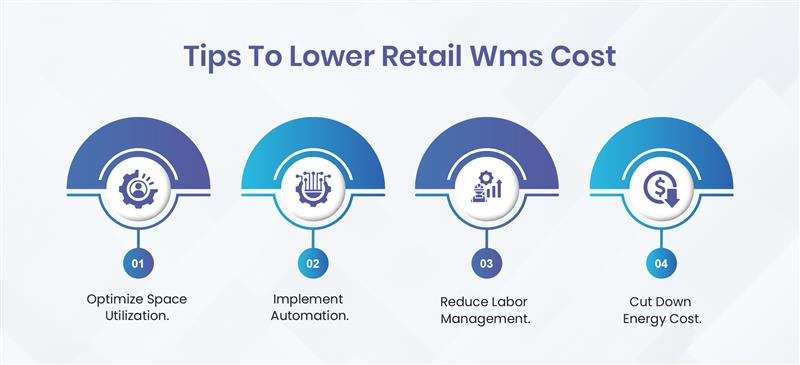
However, let’s explore the streaming warehouse tips to maximize the return on investment.
Here’s a closer look at some tips that can help a retailer lower the cost of a retail warehouse system.
Optimize Space Utilization
Poor space utilization can lead to significant costs, such as increased rent, inefficient order picking, and a higher number of laborers required for a larger space. Hence, you can reduce the cost by
- Optimize your space efficiently.
- Implement smart slotting to reduce travel time.
Implement Automation
Manual work increases labor costs and increases error rates. The automation process helps lower costs and improve efficiency.
- Empower barcode system.
- Utilize automated picking, packing, and replenishment systems.
Reduce Labor Management
Labor is often considered the highest cost. Optimizing labor management is an effective way to reduce costs and enhance efficiency in your business.
- Bring workforce allocation and real-time availability.
- Leverage WMS to streamline operations and cut costs.
Cut Down Energy Cost
Energy consumption is often considered a hidden cost with significant implications. Warehouse energy usage is frequently overlooked when optimizing energy usage.
- Integrate WMS software with energy-monitoring tools to track peak consumption hours.
- Work on insolation and apply solar panels to minimize energy consumption.
Retail WMS Cost Solutions With WareGo
Retail fulfillment system isn’t just about cost; it’s a long-term investment in your business, encompassing operational productivity and customer satisfaction.
WareGo is a robust WMS platform that helps you navigate the cost process smoothly and handle everything seamlessly.
WareGo helps reduce errors by up to 80%. Not only that, but we also ensure that our customers reduce their operational costs by 50% and achieve an order rate that is among the top 0.1%.
It’s your time to have an affordable retail WMS for your business, allowing you to design everything modern and achieve all the goals lined up, despite high rates.
Our operational Strategies are a getaway from your worries and cost problems.
Book a custom Quote Now!Frequently Asked Questions- FAQS
How much does a retail wms cost?
As for today’s market, a retail WMS can cost anywhere from $250 to $ 6,000 per month in total. In the other case, if we categorize them, cloud-based solutions would cost $100 to $10,000, and on-premises solutions can range from $ 2,500 to $200,000. It all depends on your setup, integrations, and hardware you choose.
What factors influence the cost of a retail WMS?
The key factors that influence the cost of retail wms are:
- Flexibility.
- Customization.
- Growth.
- Desired Features.
- Intelligence Data.
- Development Model.
- B2B Retail Compliance.
Is a cloud-based WMS cheaper than an on-premise system for retailers?
Cloud-based WMS systems are initially more cost-effective for startups or new retailers, but their long-term costs can vary as they offer a lower upfront cost due to reduced infrastructure needs. An on-premise warehouse system requires upfront investments in hardware.
Are there any hidden costs in WMS implementation for retail businesses?
Yes, there are quite a few hidden costs retailers are unaware of, like:
- Customization of work.
- Seamless Integration. (POS, ERP)
- Hardware & Infrastructure.
- Data cleansing & Migration.
- New or Idle Features.
